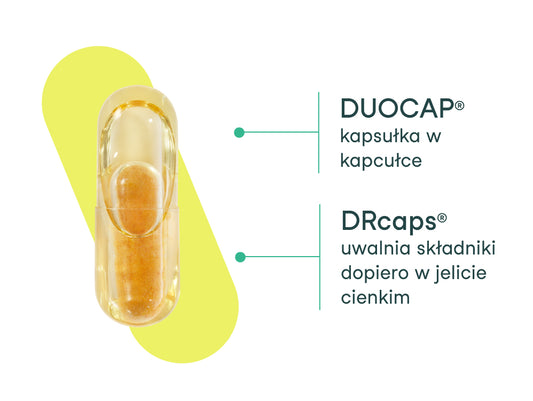
A family of 4 throws away food worth about PLN 200 a month. We buy and cook too much, we don't know how to read expiration dates and sometimes we are not creative in the kitchen. Meanwhile, cooking with leftovers has only advantages.
Pasta cooked the previous day, stale bread, not the freshest vegetables or peels - all this does not have to end up in the trash. You can cook tasty and healthy food from leftovers, and at the same time economically, which is why the entire "zero waste cooking" trend has been gaining popularity for years. Chefs, bloggers and an increasing number of Poles cook from leftovers. Learn how not to waste. And take care of the planet at the same time.
La pasta the next day.
Although Italians, who treat pasta with reverence, would frown upon the idea of reheating pasta or making casseroles from it, the rest of Europe and the world are increasingly cooking this way. Culinary blogs are full of recipes for pasta casseroles. You can use virtually any type of thick pasta and add any ingredients, both meat and vegetarian. Tomato passata or classic béchamel sauce will work as a sauce - e voila, dinner is ready.
Groats in the main role.
The same applies to groats. The next day you can use it to make a vegan pâté or vegetable cutlets. Example? Buckwheat cutlets with cottage cheese . All you need is a bag of groats, half a cup of cottage cheese, an egg, a bit of dill and chives (or other herbs), 2 tablespoons of breadcrumbs, salt and pepper. All ingredients must be mixed, formed into cutlets and fried in olive oil or clarified butter. Other types of groats will also work.

Potatoes one and two.
The list of possibilities here is really long. You can not only fry them with herbs and parsley and serve them with sour milk, but also make dumplings, Silesian dumplings, or gnocchi, which almost everyone likes. They will also be a great ingredient for a casserole or potato salad (delicious not only with herring). You can make tasty chips from peelings , especially from organic potatoes: just a little olive oil, salt and pepper. Put the peeled peels sprinkled with these products in the oven and bake for about 10-15 minutes. And that's it - it's ready!
Stale? Pride!
Throwing away bread? Forget about it even when it's stale. First of all, bread can be frozen. Secondly , each of them can be used: grate into " breadcrumbs ", make croutons for cream soup, French toast or add as a " thickener " to cutlets or an ingredient of pâté.
Fruit does not have to be fresh.
An apple that has lost its freshness? A banana that has turned brown or a pear that is no longer firm? Don't worry, everything will be useful. You can make a compote from apples and pears, add it to the cake or bake it in the oven - the dessert is ready. Very ripe bananas that have been left for a long time can be used as an addition to omelets - they add great taste and aroma, not to mention consistency. Just add a banana mashed with a fork to the egg and flour, mix well with the rest of the ingredients and fry.
Bananas can also be used to make banana bread or a cocktail based on milk, milk products or water. The fruits themselves are also great, they can be mixed with water and, for example, linseed. Economical, healthy and delicious.
Broth from leftovers.
Sure, vegetable peelings can be composted - this is also a good solution. However, you can go a step further and cook nutritious broths with the leftovers of carrots, parsley and leek. They will work well as the base of any soup. The same applies to herbs - if they wither, there is no point in throwing them away. They will still add wonderful flavor to soups or sauces, and you can always freeze the excess.

Every year we throw away 5 million tons of food.
The zero waste cooking trend came to Poland relatively late and it took a while to catch on. The reason was obvious - the eternal shortage of communism and the greedy delight of full shelves after the breakthrough in 1989. We had to be satisfied with the fact that everything is at our fingertips, although historically in Poland there was a rich tradition of not wasting, both medieval and Enlightenment. The result is that, according to the Food Bank's estimates , we throw away as much as 5 million tons of food every year!
Globally, according to estimates by the Food and Agriculture Organization of the United Nations, this number reaches 1.3 billion tons! And we are just learning how not to waste. All over again.
Zero waste restaurants.
However, publications on zero waste cooking with recipes are becoming more and more common. The group of freegans, i.e. people who eat what they find in garbage cans, is still growing. Today, there are also soup kitchens in Poland, where Poles are more and more willing to share what is left from dinner. Just look at the emergence of restaurants cooking from leftovers , like those in New York or London, where you can eat delicacies such as cabbage stew or hamburgers on stale bread.
Bibliography:
- Kojzar K., “We throw away 5 million tons of food annually. The Food Bank encourages you to "celebrate and not waste", smoglab.pl, December 21, 2020.
- Porcarelli E., “Cucina zero waste: una rivoluzione semplice”, notiziedigusto.it, August 30, 2020
- Casella L., “Cucina zero waste: la sostenibilita passa dai fornelli”, vanityfair.it, February 10, 2021
- “No leaf left behind: Delicious zero waste recipes”, fivemedia.com, accessed November 19, 2021.
- “Buckwheat cutlets”, Ania Gotuje blog, accessed November 19, 2021.


What makes our capsule stand out?
The nikalab capsule impresses not only with its appearance, but also with its operation. We used two innovative...








